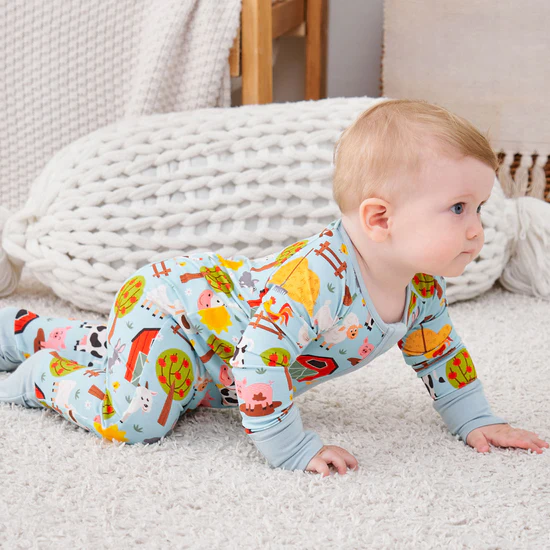Newborn Baby Clothes Checklist: What You Really Need (and What to Skip)

Welcoming a new baby into the world is exciting—but preparing for their arrival can also feel overwhelming. Between endless baby gear and the cutest outfits lining store shelves, it’s hard to know what’s truly essential and what you can skip. This guide breaks down exactly which newborn baby clothes you’ll actually use during those first few weeks—and which ones are more “nice-to-have” than necessary.
Must-Have Newborn Baby Clothes
These are the wardrobe staples your newborn will need from day one:
1. Onesies (Short and Long Sleeve)
These are the backbone of your baby’s wardrobe. Look for soft, breathable cotton with envelope necklines for easy dressing. Aim for 6–8 onesies.
2. Footed Sleepers or Pajamas
Perfect for day or night, footed sleepers keep your baby cozy and eliminate the need for socks. Choose zip-up styles for easier diaper changes. You’ll need around 4–6 sleepers.
3. Swaddle Blankets or Sleep Sacks
For safe sleep, skip loose blankets and opt for swaddle wraps or wearable blankets. These help your newborn feel secure and sleep better.
4. Mittens and Hats
Babies lose heat quickly through their heads, so 2–3 soft cotton hats are essential. Mittens help prevent face scratching from those tiny fingernails.
5. Socks or Booties
Even if you’re using footed sleepers, it’s helpful to have a few pairs of socks or booties for layering or warmer days.
6. Kimono-Style Tops
These open-front tops are perfect for newborns whose umbilical cord stump hasn’t fallen off yet. Keep 2–4 on hand for those early days.
What You Can Skip (or Buy Less Of)
There are plenty of adorable baby clothes out there, but not all of them are practical for a newborn’s daily needs.
1. Fancy Outfits
Dressy clothes with buttons, ruffles, or stiff fabrics may look cute—but they’re usually uncomfortable for newborns and difficult to put on.
2. Shoes
Your baby won’t be walking for months, so shoes are unnecessary. Stick to soft booties for warmth.
3. Too Many Newborn Sizes
Babies grow fast! Get a mix of newborn and 0–3 month sizes. Some babies skip the newborn size altogether.
4. Clothing with Complicated Fasteners
Avoid anything that takes more than a few seconds to open. Middle-of-the-night changes will be easier with simple zippers and snaps.
Tips for Shopping Smart
-
Choose soft, organic materials to avoid irritating your baby’s sensitive skin.
-
Buy gender-neutral basics if you’re planning for future siblings.
-
Watch for sales and baby bundles to save money on essentials.
-
Wash all clothes before first use using a baby-safe detergent.
Conclusion
When it comes to newborn baby clothes, less is often more. Stick to cozy, easy-to-wear basics that make diaper changes and swaddling simple. By focusing on what you truly need and skipping the fluff, you’ll save time, money, and stress—so you can focus on what really matters: bonding with your beautiful new baby.
- Art
- Causes
- Crafts
- Dance
- Drinks
- Film
- Fitness
- Food
- Games
- Gardening
- Health
- Home
- Literature
- Music
- Networking
- Other
- Party
- Religion
- Shopping
- Sports
- Theater
- Wellness


